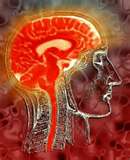
What is Hemoencephalograph or HEG Neurofeedback?
HEG Neurofeedback is a technique in which the brain is taught through feedback (visual and/or auditory) how to improve its regulation and to work more optimally. HEG or Hemoenchephalographic Biofeedback utilizes a near infared light that is passed through the skull. A nearby photocell measures the refraction of light returning through the skull, which gives a measure of blood flow in the tissue between the light and the photocell. This procedure allows a computerized measurement of blood flow in the brain to be used and "fed back" to the individual being trained. This is done for the purposes of increasing blood flow to areas that are known to be underperfused with blood.
SPECT and PET studies have implicated insufficient blood flow (hypoperfusion) in specific arebrain areas as a factor in various brain dys-functions. Disorders in which hypoperfusion has been observed include ADD/ADHD, Some Depression or Mood Disorders, Chronic Fatigue, Fibromyalgia, Migraines, Austism, some head injuries, and Disorders with Cognitive Deficits, such as Dementias.
Blood flow is essential for healing of neural tissue when there has been injury or an area is underfunctioning. Improved blood perfusion of an area helps to develop more healthy neural functioning. Blood brings needed nutrients, especially the brain's primary source of nourishment--glucose, for growth and repair of neural tissue and also carries away waste products and toxins associated with normal metabolic activities of brain cells.
By training the brain, much as you might train your body in physical exercise, we can help your brain be more flexible, learn, and function better intellectually and emotionally.
A better functioning brain can improve a variety of things, including sleep patterns, attention, alertness, concentration, and ability to regulate mood or emotions. We may also reduce certain negative symptoms you are having, such as concentation problems, stress reactivity, anxiety or depression, chrnoic pain, headaches, and other unwanted problems.
Is There Research Support for Use of HEG Neurofeedback?
Research on the HEG device has been going on at UCLA and the Biofeedback Institute of Los Angeles by Drs. Herschel and Marjorie Toomim for many years. Additionally, other researchers have studied this instrument for treatment of brain disorders.
Results have suggested that HEG Neurofeedback can enhance cognitive functioning and reduce symptoms associated with hypo-perfusion in a number of disorders. HEG Neurofeedback is still undergoing experimental investigation for its uses and contraindications.
Are There Side Effects?
Subjects in studies of HEG reported no negative experiences resulting from HEG apart from an occasional transient mild headache and fatigue.
Always report back on the effects you experience so that your treatment can be tailored to your response and symptoms.
How is HEG Neurofeedback done?
Initially, we meet with you to review your medical history and functioning. This may be followed with additional assessment, including symptom checklist, computerized testing, or a full 19-lead EEG assessment to determine areas of your brain that might best benefit from HEG Neurofeedback assistance or other treatements. A treatment plan is designed for each individual taking into account their unique issues or problems and assessment data.
Once we begin HEG Neurofeedback training, a headband is placed around the head in particular locations to allow a computerized program to read your blood flow during a session. A small sensor light is used which flashes light into the skull. This is normally not perceptible to the individual doing training, but is read by the photocell and light refraction is read. Feedback is given by sound or images on a computer screen and suggestions will be given by your clinician to help you learn the mental state that you need to produce to improve blood flow.
How long does it take?
Some people have a positive response to HEG Neurofeedback sessions after the first session. More typically though, it may take anywhere from 10 to up to 20 sessions or more to experience improvement in symptoms.
It helps to keep notes between sessions and to give specific details to your clinician about your particular responses so that your program of treatment can be tailored to your specific needs and symptoms.
Conditions for which HEG therapy has been used to enhance brain functioning:
- Attention Deficit Disorder
- Depression
- Anger issues
- Anxiety
- Some Neurological conditions
- Migraine Headaches
- Mild closed head injury
- Learning & Memory problems
- Seizures
- To improve Concentration
